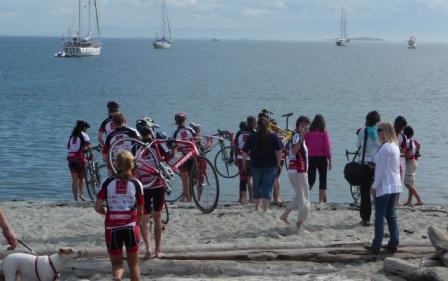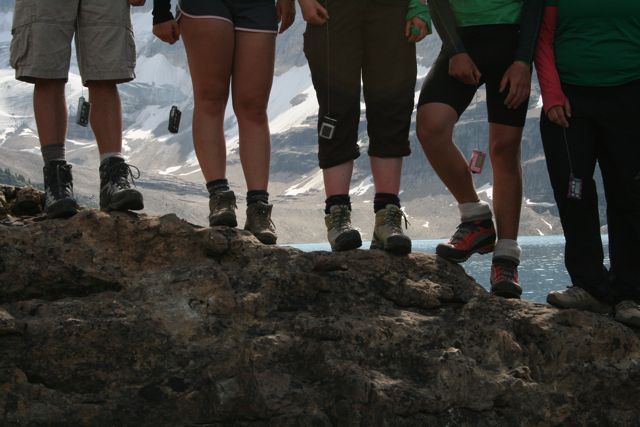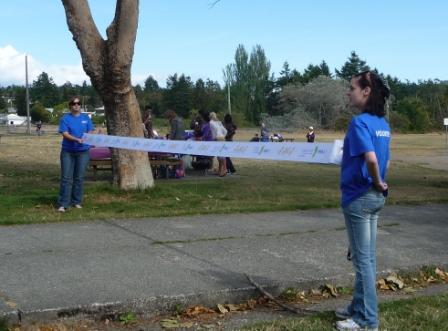Every time someone gives me a “poor you” look and asks, in hushed tones, “how is your daughter doing?” – hesitant, as if expecting bad news…I remember it’s just a matter of education.
 Cyclebetes 2010—they’re here at Gyro Park, Victoria to dip the wheels of their bikes in the Pacific Ocean. Yes, it’s cliché but if you’d ridden from Halifax, you’d be pretty damn enthusiastic about this kinda cliché too. Some of the folk here were part of local relay segments, some did the whole shot. Cyclebetes are people with Type 1 or family members of people with Type 1. As the teams go across the country they visit schools for spin competitions and public education. Fund raising is, of course, a big part of their activity but education is also important. Type 1 and Type 2 need understanding, not pity or judgment.
Cyclebetes 2010—they’re here at Gyro Park, Victoria to dip the wheels of their bikes in the Pacific Ocean. Yes, it’s cliché but if you’d ridden from Halifax, you’d be pretty damn enthusiastic about this kinda cliché too. Some of the folk here were part of local relay segments, some did the whole shot. Cyclebetes are people with Type 1 or family members of people with Type 1. As the teams go across the country they visit schools for spin competitions and public education. Fund raising is, of course, a big part of their activity but education is also important. Type 1 and Type 2 need understanding, not pity or judgment.
Sebastien Sasseville is the first person with Type 1 Diabetes to reach the summit of Mount Everest. He warmed up with Killamanjaro and is on his way to being a member of the 7 continent club. In the meantime, you can go to his website to keep track of his activities ’cause I get out of breath even trying to list them all. Besides, he is gorgeous…his climbing gear does not do him justice.
 Laura Brandes, My Favourite Number, is the go to person if you’re reaching out to the young adult community. I feel so old saying that but honestly, I am an old fart and the lights go out when I walk into the room. She’s got the energy and the authority and the perspective. She’s my hero too.
Laura Brandes, My Favourite Number, is the go to person if you’re reaching out to the young adult community. I feel so old saying that but honestly, I am an old fart and the lights go out when I walk into the room. She’s got the energy and the authority and the perspective. She’s my hero too.
Check out Connected in Motion…these are not people who are waiting for permission to live or sitting quietly while science hunts for a cure – life is out there and they have it by the, ah…throat.



 I have the grand title of “
I have the grand title of “